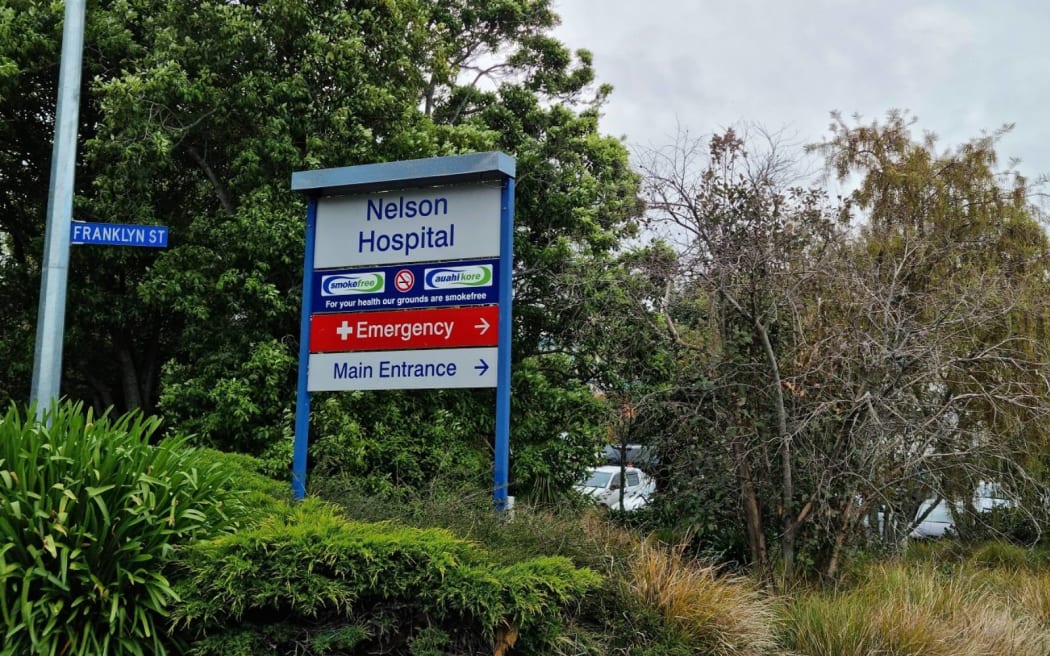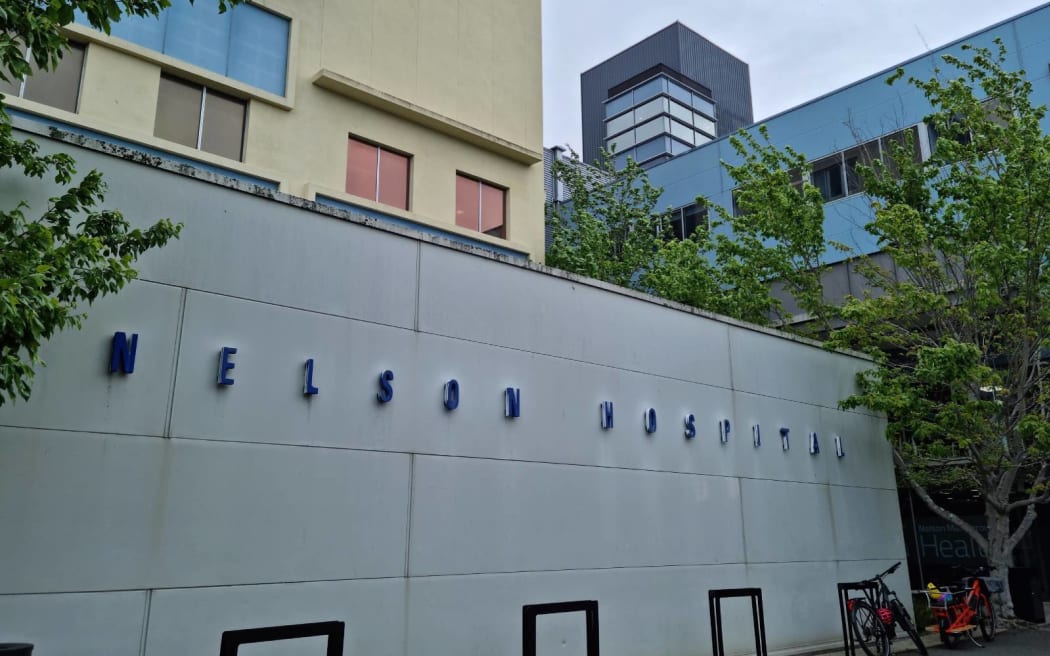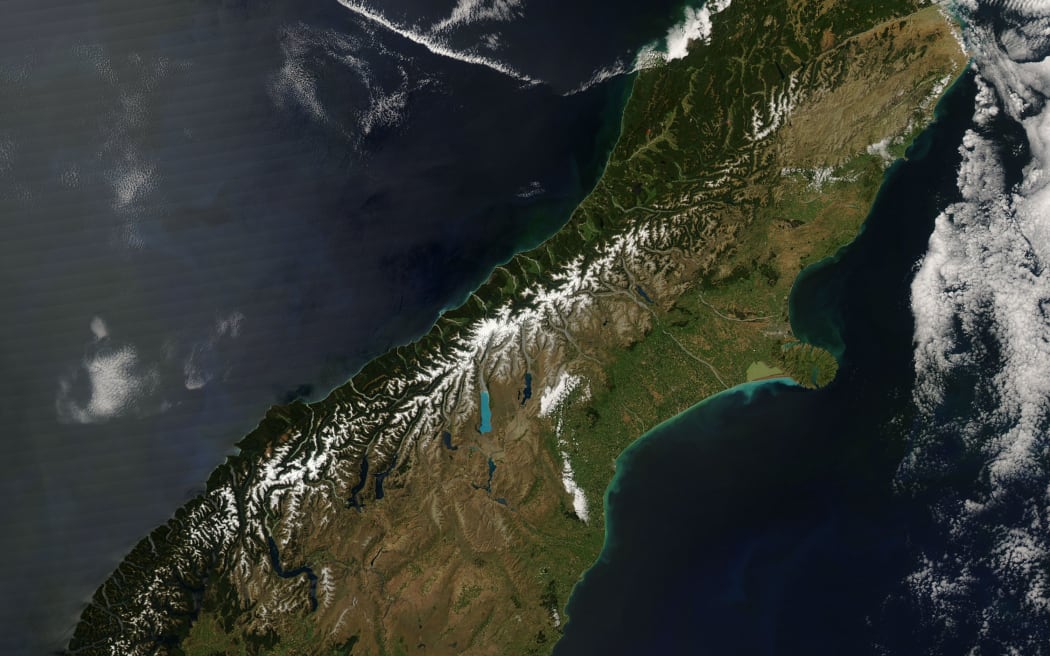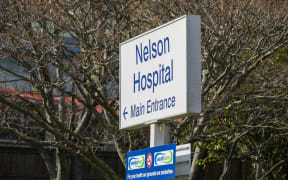
The Nelson Hospital redevelopment has been on the table for a number of years, due to increasing demands from a growing population. Photo: RNZ / Samantha Gee
More than seven years after parts of Nelson Hospital were deemed earthquake prone, the design work required to get them up to standard is yet to be completed.
The George Manson and Percy Brunette buildings at Nelson Hospital were found to be below 34 percent of the national building standard in 2016, with the Nelson City Council issuing notices in 2020 that required the two buildings be strengthened or replaced by November 2028.
The deadline for seismic strengthening comes amid the Nelson Hospital redevelopment, which is a decade from completion.
A report from Te Whatu Ora last year found more than 100 hospital buildings around the country were below 34 percent of the national building standard, despite many of them being critical for any disaster response.
Nelson Hospital is in an area deemed medium-risk area for a major quake, and Nelson Mayor Nick Smith has voiced concerns the city would be left without a fully functioning hospital in a major earthquake.
Te Whatu Ora said it expected to lodge building consent for the required seismic works early next year, and that it was on track to complete them by 2025.
Resarch shows there is a 75 percent chance of a big earthquake occurring on the Alpine Fault within the next 50 years.

Nelson Hospital, with the Percy Brunette Block on the left (in yellow) and the George Manson Block on the right. Photo: RNZ / Samantha Gee
University of Canterbury disaster risk and resilience senior lecturer Dr Tom Robinson said a magnitude 8 earthquake on the Alpine Fault would be 500 times more energetic than the magnitude 6.2 Christchurch earthquake in 2011, and twice the size what was experienced in the 2016 Kaikōura earthquake.
Robinson is the incoming science lead for the AF8 (Alpine Fault magnitude 8) programme, a collaboration between scientists and the emergency management sector, who are working to ascertain the impact of a severe rupture of the alpine fault in the South Island and how to best plan for and respond to it.
He said the impact of an alpine fault earthquake would depend on where it was centred and the direction of the fault rupture.
An earthquake centred near Milford Sound, that ruptured north, would likely have the most impact on Nelson.
Unreinforced masonry and particularly weak buildings which were not up to code were likely to be severely damaged, he said.
There would also be disruption to services, with widespread power and communications outages, and State Highway 6 connecting Nelson to the West Coast likely to be blocked by landslides.

The Alpine Fault is marked out on satellite images by the western edge of the Southern Alps snowline. Photo: NASA
Robinson said any building currently under construction with a 50-year lifespan was likely to experience an alpine fault earthquake in its design life, with that knowledge incorporated in the planning.
Te Whatu Ora interim infrastructure delivery head Monique Fouwler said the agency was working closely with the national team on the design for works required to lift the earthquake-prone building notices issued to Nelson Hospital.
The extent of the scope of works was not yet fully developed, but a building consent was expected to be lodged in the first half of 2024 once the design was confirmed.
Fouwler said it could assure the community that robust processes were in place to minimise disruption to healthcare services during an earthquake.
Disaster resources, such as portable generators, an inflatable medical tent and a mobile clinic could be deployed promptly in an emergency, and were regularly utilised and tested during training and while delivering health services in rural areas.
Fouwler said the Nelson Marlborough team worked with Civil Defence and other agencies to maintain an active preparedness programme, with regular training exercises to improve their response processes.
In November, staff undertook two full disaster exercises at Nelson Hospital and next year would be involved in two major earthquake training exercises.





